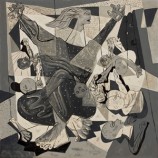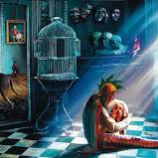Sorcerers have a peculiar bent. They live exclusively in the twilight of a feeling best described by the words “and yet…” When everything is crumbling down around them, sorcerers accept that the situation is terrible, and then immediately escape to the twilight of “and yet…”
Sorcery is a journey of return. We return victorious to the spirit, having descended into hell. And from hell we bring trophies. Understanding is one of our trophies.
Our difficulty with this simple progression is that most of us are unwilling to accept that we need so little to get on with. We are geared to expect instruction, teaching, guides, masters. And when we are told that we need no one, we don’t believe it. We become nervous, then distrustful, and finally angry and disappointed. If we need help, it is not in methods, but in emphasis. If someone makes us aware that we need to curtail our self-importance, that help is real.
Sorcerers say we should need no one to convince us that the world is infinitely more complex than our wildest fantasies. So, why are we dependent? Why do we crave someone to guide us when we can do it ourselves? Big question, eh?
There are no procedures in sorcery. There are no methods, no steps. The only thing that matters is the movement of the assemblage point. And no procedure can cause that. It’s an effect that happens all by itself.
I have just explained that the movement of the assemblage point happens on its own. But I also said that the presence of a master can shift the assemblage point of his apprentice and in a way that the master masks his ruthlessness or help or else he will get in the way of this shift.
What appears to be a contradiction is actually two sides of the same coin. The master entices the assemblage point into moving by helping to destroy the mirror of self-reflection. But that is all he can do. The actual mover is the spirit, the abstract; something that cannot be seen or felt; something that does not seem to exist, and yet does. For this reason, sorcerers report that the assemblage point moves all by itself. Or they say that the master-sorcerer moves it. Him being the conduit of the abstract, has permission to express it through his actions.
The master shifts the assemblage point and although it is not he himself who actually provokes the shift. Or maybe it is more appropriate to say that the spirit expresses itself according to the ruthlessness of the master. The spirit can move the assemblage point with the simple presence of an impeccable master-sorcerer.
Because the spirit has no perceivable essence, sorcerers deal rather with the specific instances and ways in which they are able to shatter the mirror of self-reflection.
The world of our self-reflection or of our mind is very flimsy and is held together by a few key ideas that serve as its underlying order. When those ideas fail, the underlying order ceases to function.
Continuity is the key idea. Continuity is the idea that we are a solid block. In our minds, what sustains our world is the certainty that we are unchangeable. We accept that our behavior can be changed, that our reactions and opinions can be changed, but the idea that we are flexible enough to change appearance to the point of being someone else, is not part of the hidden order of our self-reflection. Whenever a sorcerer interrupts this order, the world of reason stops.
Continuity is so important in our lives that if it breaks it’s always instantly repaired. In the case of sorcerers, however, once their assemblage points reach the place of no pity, continuity is never the same.
Your uncertainty is to be expected. After all, you are dealing with a new type of continuity. It takes time to get used to it. Warriors spend years in limbo where they are neither average men nor sorcerers.
They have no choice. They all become aware of what they already are: sorcerers. The difficulty is that the mirror of self-reflection is extremely powerful and only lets its victims go after a ferocious struggle.
Related Articles













